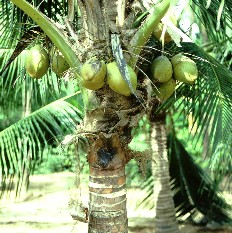http://www.reuters.com/article/scienceNews/idUSN2832706120070628?pageNumber=3
Scientists take step to making synthetic life
Thu Jun 28, 2007 2:10PM EDT
By Maggie Fox, Health and Science Editor
WASHINGTON (Reuters) - Scientists have taken a first step toward making
synthetic life by transferring genetic material from one bacterium into
another, transforming the second microbe into a copy of the first.
They intend to use their technique to custom-design bacteria to perform
functions such as producing artificial fuel or cleaning up toxic waste,
the researchers report in Friday's issue of the journal Science.
"This is equivalent to changing a Macintosh computer to a PC by
inserting a new piece of software," Craig Venter, a genome pioneer who
now heads his own institute in Rockville, Maryland, told reporters in a
telephone briefing.
"I think eventually we could make artificial cells," Venter added. "This
is a first step."
Venter has been trying for years to create a microbe from scratch. This
is not quite it, but his team re-programmed one species of bacteria by
adding in the genetic material from a closely related species.
They gene-engineered the replacement chromosome to resist an antibiotic
and then flooded their experiment with the drug. The bacteria that
survived all carried only the genes that had been spliced in.
They believe all the others simply died, but they are in fact not sure
how the new DNA re-programmed some of the bacteria or what happened to
the original DNA.
"I think that we don't know for certain how the donor genome takes
over," Venter Institute researcher Ham Smith told reporters.
Nonetheless, Venter's team has applied for a patent on the process and
they hope to exploit it industrially. Venter believes it will be
relatively straightforward to build a new chromosome from scratch, one
that performs the desired functions, to create a custom-made bacterium.
"What we are reporting in this Science paper is not anything about a
synthetic organism," Venter said.
BOOTING UP LIFE
"It's a key enabling step so that once we have a synthetic chromosome we
know it is now possible to boot that up. So synthetic biology itself and
synthetic genomics is much closer to being proven," Venter added.
"We look forward to having fuels from genetically modified organisms
within the next decade and perhaps in half that time."
The key to the experiment was using a very simple bacterium called
Mycoplasma capricolum, which often infects goats. Bacteria do not have a
nucleus as do cells from more complex organisms.
The research team injected a chromosome from a related species called
Mycoplasma mycoides.
They do not know how well it worked but at least some of the M.
capricolum were transformed into what looked and acted like M. mycoides.
The scientists concede it will be much more difficult to do this with
more complex organisms, even bacteria, that have cell walls and all
sorts of defensive mechanisms to keep out foreign
DNA.
A non-profit Canadian organization called the ETC Group expressed
concern about the experiment and Venter's patent application. "We are
extremely concerned about the breadth and implications of this patent
and of its monopoly claims," the group's Jim Thomas said in an e-mail.
"We will be requesting that patent offices worldwide refuse this patent."
But Venter defended the patent. "At every stage of what the team has
done here over the past several years, we have had to develop novel
technologies and approaches that have not existed before because the
field has not existed before," he said.
--
Check for earlier Pacific Biofuel posts: http://pacbiofuel.blogspot.com/

No comments:
Post a Comment